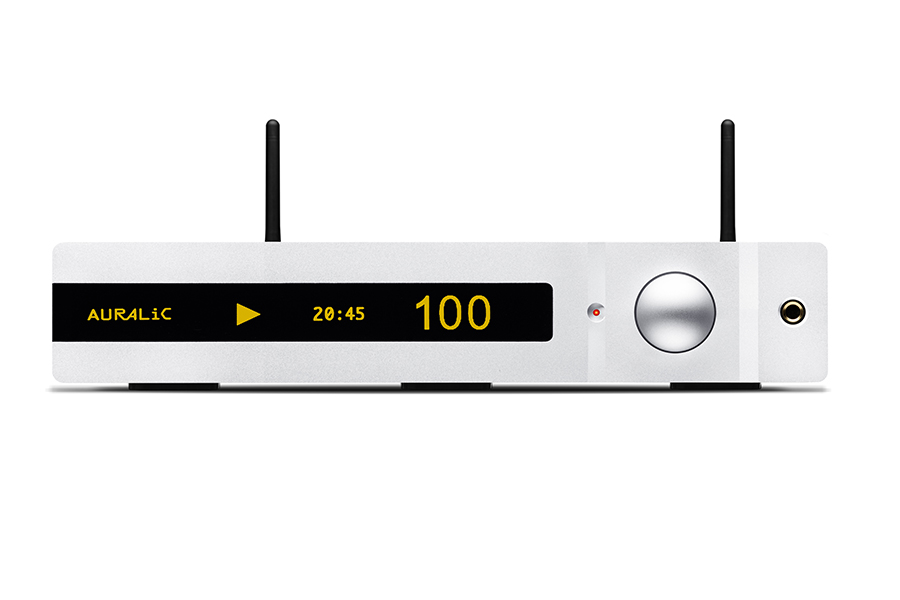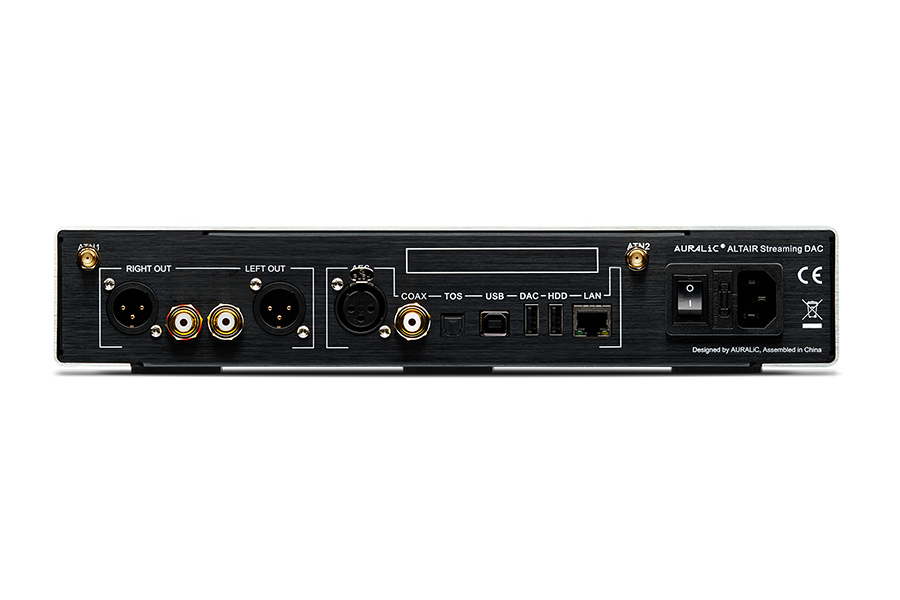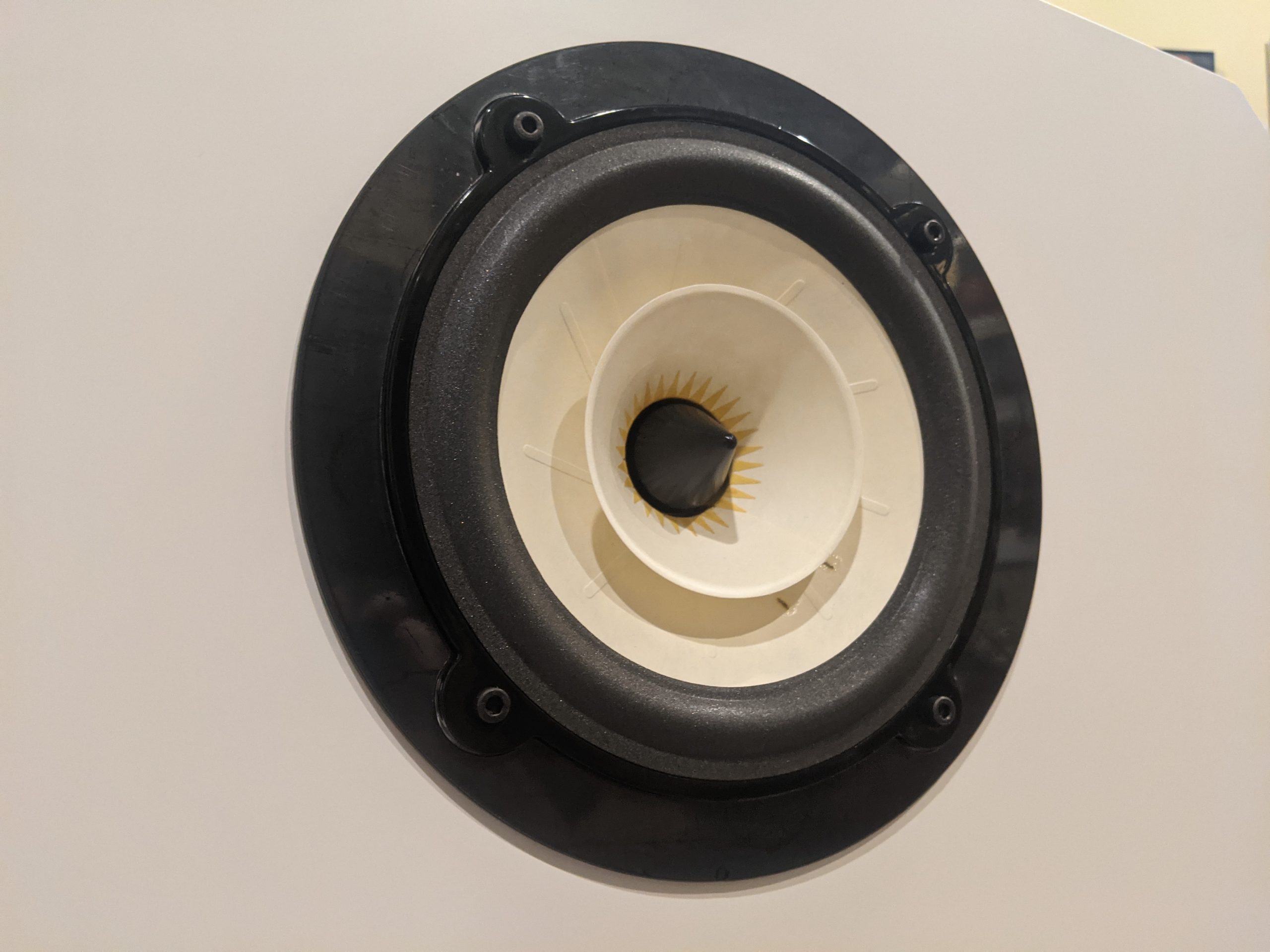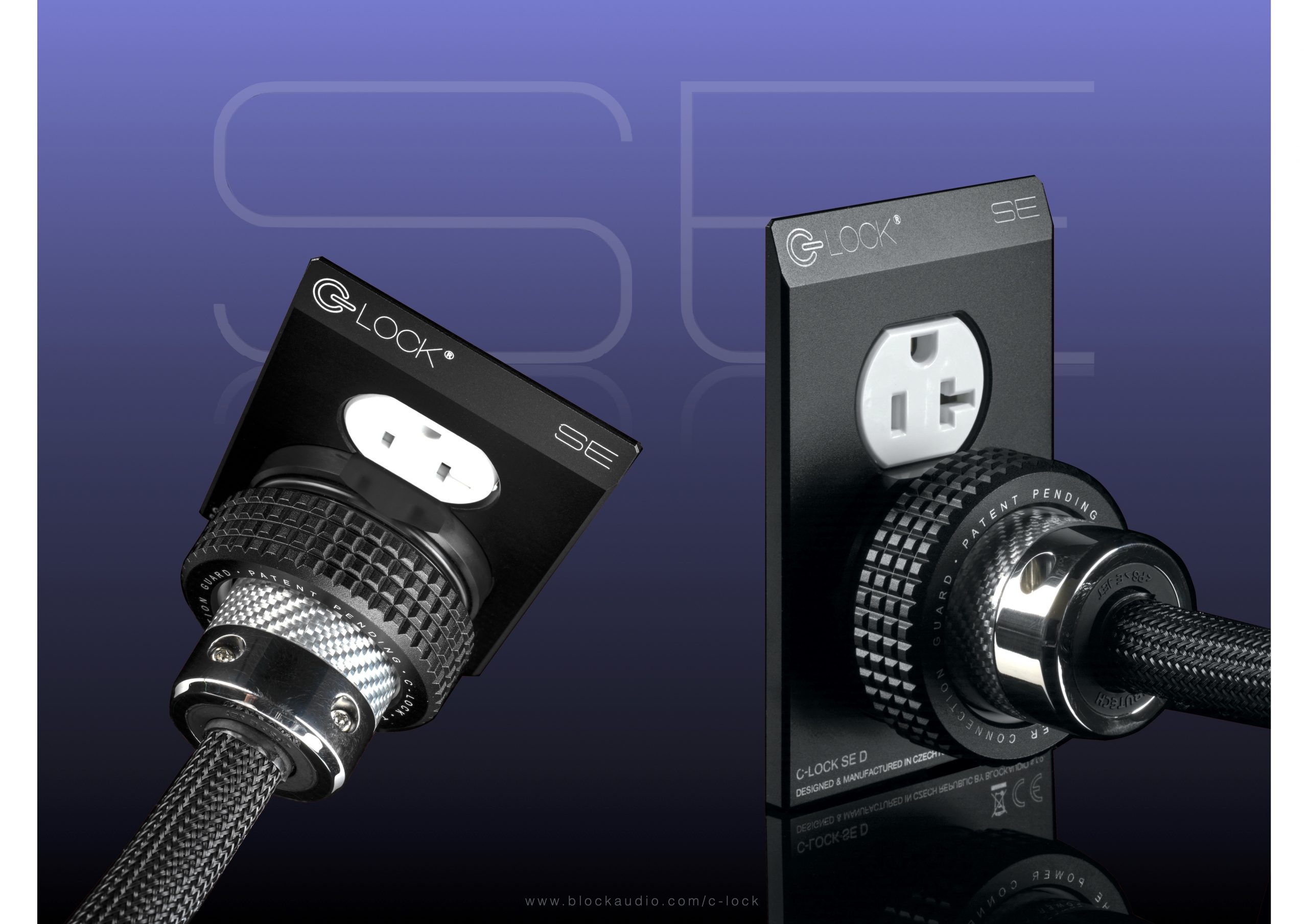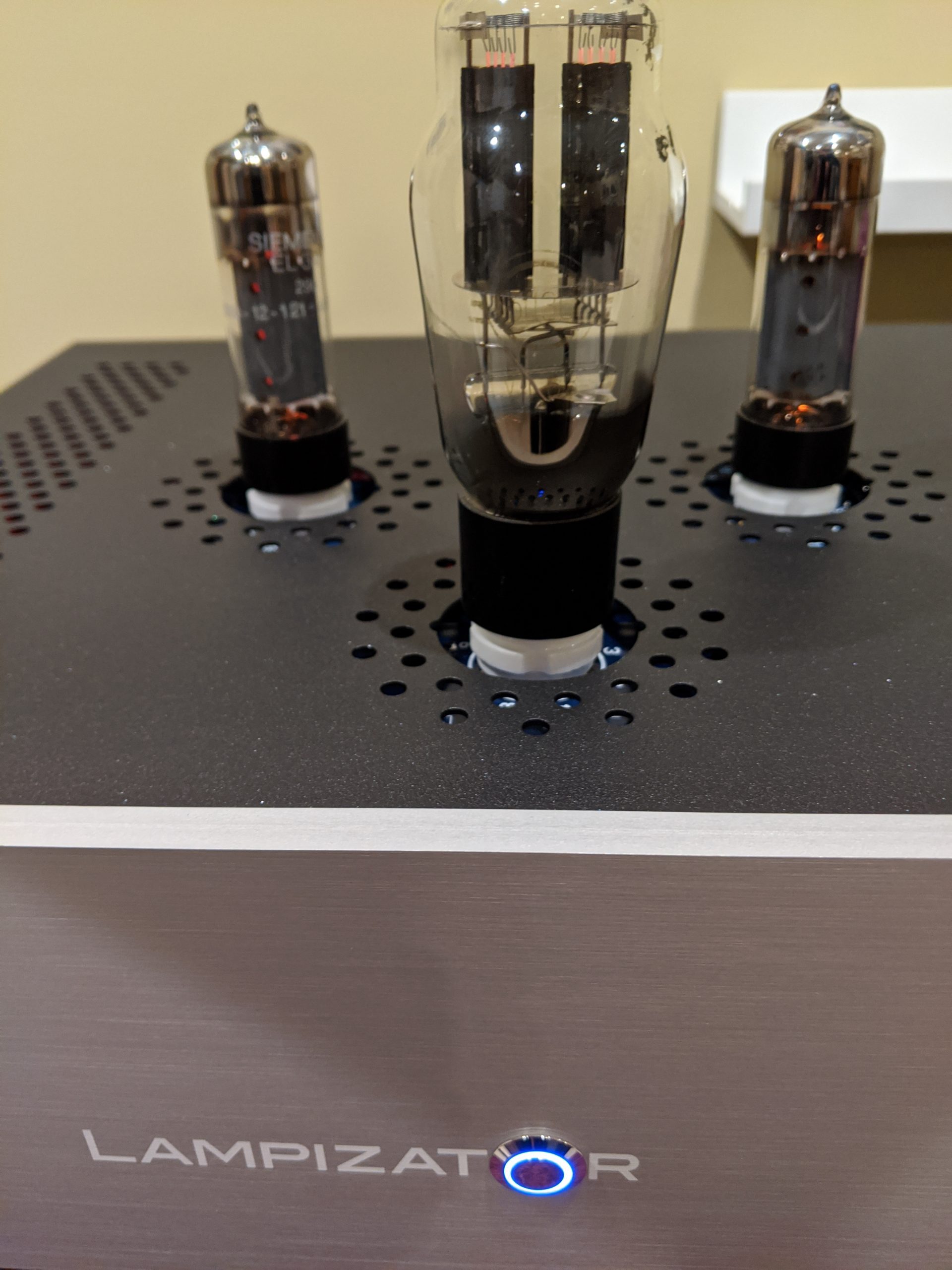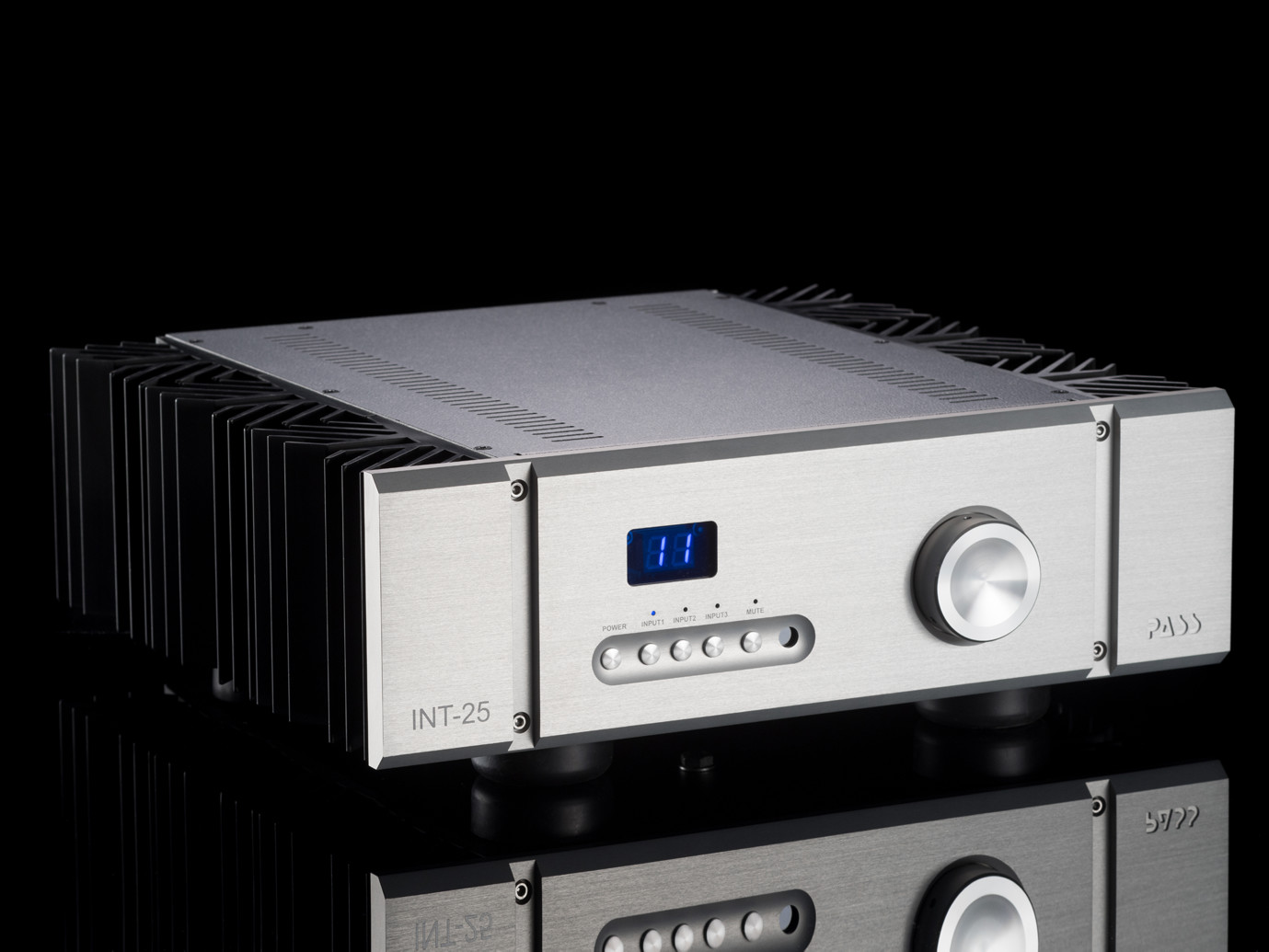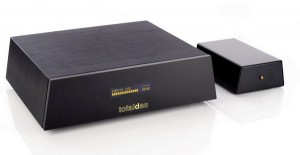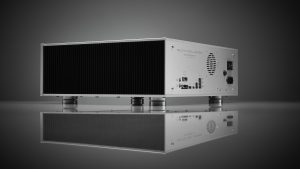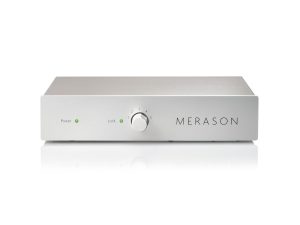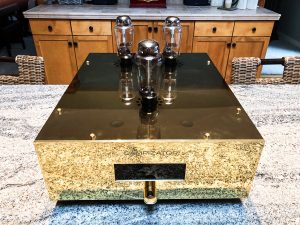For the second time this year, I've had the good fortune to report on an exciting new digital product. This time it is Auralic's latest digital to analog star, the Auralic Altair Wireless Streaming DAC.
According to Auralic's president & CEO, Xuanqian Wang, "The new ALTAIR is both a high quality streamer and DAC, and was designed based on feedback from dealers for an exceptional yet convenient-to-operate Digital Source unit at a $1800 - $2000 price point."
At $1899 retail, the Altair meets the pricing criteria, and is certainly convenient to operate. Convenience and simplicity, however, do not necessarily go hand-in-hand, yet Auralic has managed to make the Altair fairly simple for all it can do. Altair plays 12 different types of music files and decodes digital formats up to DSD256 resolution. Sharing the same smallish chassis with Auralic's flagship DAC, the Vega, Altair's strangely comforting orange-yellow OLED front panel displays everything from connection status to volume. The unit features a Femto Master Clock, proprietary linear power supply with noise filtering, volume control, and ¼" headphone output. Auralic also uses its Tesla quad-core hardware platform to run the DAC's control software. While the Altair may look like the Vega, in order to lower the price and still allow for Altair's embarrassment of computer audio riches, Auralic redesigned the internal components. While the Vega uses ESS' Sabre 9018 DAC chip, the Altair uses the ESS 9018K2M, and the Altair's less costly output stage drops the Vega's highly regarded Sanctuary upsampling processor module. There are other differences of course, but the upside to these cost-cutting measures is a price that places the Altair at slightly less than half of its big bro-star Vega.
Multi-tasker Extraordinaire
Although it does not have analog inputs, the Altair does have—by nearly any measure of light years—an expanding solar cloud of digital options: AES/EBU, Coax, Toslink (optical), and Asynchronous USB. Adding to these "normal" hard connections, the Altair features extensive network streaming connections, both hardwired and wireless: RJ45 Gigabit Ethernet, 802.11 b/g/n/ac tri-band WI-FI, and Bluetooth. And the Wi-Fi is so robust, it streams DSD without glitches!
The Altair uses Auralic's Lightning streaming controller to talk to their proprietary music player application, Lightning DS. Lightning DS is iOS based, but interfaces with UPnP/DLNA servers, Open Home renderers, and functions as a Roon-Ready endpoint. Altair supports wireless streaming of DXD and quad-rate DSD via UPnP/DLNA from a NAS or computer. The Lightning controller supports gapless playback, multi-room functions, and Memory Replay to cache and play an entire track without using data transfer. It also streams music from Airplay, Songcast, Internet Radio, Tidal, Qubuz, and Spotify via smartphone or computer.
While there are numerous ways to get music into the Altair, two of them are worth special mention: A rear USB hard drive connection and an optional internal hard drive. Yes, you can connect an external USB hard drive directly to the Altair, and/or have a dealer install a 2.5" spinning or solid-state hard drive internally; making the Altair a stand-alone server. The supplied unit did not have the optional internal drive, but I did use the external connection extensively. The Altair is an amazingly versatile piece of audio gear. It's the closest thing to a digital kitchen sink that I have used. Being brutally honest, I didn't/couldn't use all the choices it provides, let alone write about them!
Set Up
After unpacking the Altair (nice packaging!), the first order of business was to download and install the Windows USB driver on my Asus Intel i5 laptop, and the Lightning DS app on a loaner iPad. Both installs went smoothly. Auralic is working on both Mac and Win 10 browsers, but until those are complete, the Altair must first be set up with Auralic's Lightning DS, which again, only runs on Apple's iOS platform.
When powering up for the first time, the Altair and the Lightning DS app guides you through set-up, a firmware update, and then sets the network path to the location of your music files. If using wireless, a Wi-Fi logo will appear on the Altair's display. You must first connect your device (tablet, computer) to the Altair hotspot, at which point the DS app will prompt you to connect back to your own Wi-Fi router. It's a bit confusing until you've done it once or twice. After that, no big deal. The app is fairly straightforward, but it took me an hour or so of fiddling to figure out the basics. Lightning DS may not have the superfluous options of some media players, but it works very well, and sounds great. While I admit I wished for a Windows option for setting up Altair, once the DS app was connected to the DAC, I could control the Altair via Roon Labs music software on both my Windows 10 laptop and the Roon Remote app on my Nexus 7 Android Tablet. Altair's manual states it can also be used with Open Home protocol, although I did not use this method myself.
There are numerous set-up options on the Altair; from four digital filter settings, to more mundane choices like phase-reversal, and balance. Fixed volume bypass, which I used for the majority of my listening, is attained by turning the volume up to 100. The main thing to know is that every option I used worked. Not a problem child in the bunch with the exception of some connection issues with my computer as noted below. For clarity; I did not use Tidal, Qubuz or any of the Apple universe of streaming products. But Coax, Toslink, Ethernet, WI-FI, Bluetooth, Synology NAS, and the USB hard drive input all worked brilliantly.
While I've made much about how easy the Altair is to use (it is) and that every functional option I used works (it does); if you plan to use streaming audio (and why wouldn't you?), then there are some important things to note. If you (like me), are a networking newbie, you may need a little help. At the start, I had an external USB drive connected to my laptop, and was trying to stream music through the Lightning DS app via borrowed iPad. I had trouble connecting to my music folder because I was totally unfamiliar with SMB (you'll have to look it up), and didn't understand my shared (network folders) were requiring permissions that I had failed to set correctly. To simplify and move forward, I decided to take Auralic's suggestion and use one the Altair's most interesting options: I plugged my external hard drive directly into the USB HDD port on the back of the Altair. Bam, it worked like a charm! I never looked back, it's simply way too simple.
To allay fears of folks who worry they might have trouble setting up Lightning DS, Auralic's Chris Morris explained to me that a new purchaser of an Altair would get set-up support from their dealer to ensure the installation of a new Altair goes smoothly. In addition, to eliminate problematic computer set ups like mine, Mr. Morris stressed how well Altair works with a NAS. I can attest to this truth, as late in my review time I migrated to a Synology NAS and it has worked faultlessly. But let's not forget what I stated a few paragraphs ago: You can plug a USB hard drive directly into the Altair, or have a dealer install an internal hard drive. With either of these options, other than requiring a tablet to run Lightning DS, you don't need a computer, external HHD, or NAS.
A Star is Born
The Altair's use of the ESS Sabre DAC chip for conversion duties is certainly not unusual, but is a smart choice. I've heard many iterations of them here in the Tune Saloon, and I've liked every one I've heard—the Altair included.
Because the Altair has a built-in volume control, it can be used to drive an amplifier directly and functions as a digital preamp. The volume control is analog, but it controls the voltage on the DAC chip, so there is no potentiometer in the signal chain to muck up the sound, and such, I enjoyed driving the Pass XA 30.8 directly from the Altair. For sure my Bent Audio AVC-1 linestage sounded better, but if I was a digital-only music user, I would certainly entertain the idea of one less box. Another feature of the Altair is the headphone output that powers the front-mounted jack from its analog outputs. It sounded pretty darn nice driving my BeyerDynamic DT770 Pro 80 ohm headphones. While I don't listen to headphones much, having the choice to listen via cans is a nice bonus.
Star Power!
The Altair checks a plethora of operational boxes, but in my experience, it also helps push the high-fidelity boundaries of what is expected for dollars invested. Although Mr. Wang has publicly stated that Auralic sacrificed a bit of sound quality to hit the price point, I think the Altair sounds great. It is bold, infectious, and lit-up with color across the frequency spectrum. Its energetic sound is exciting, somewhat upfront, and very detailed. In my system, there is a robustness in the lower octaves; with very good tone and a mid-range that is clear and present.
The Altair's extended treble energy is obvious. It's a little on the lean side; and can get a bit edgy when the volume is cranked. Although I felt the deepest octaves suffered at times from a slight lack of definition, overall bass reproduction was excellent; solid, front and center, and tuneful—seriously dynamic bass that reaches into deep space.
The soundstage of the Altair is a little flat in comparison to some DACs I've had in house, providing a more "wall of sound" staging. Images are solid and appropriately sized, with the stage mainly between the speakers. Altair seems to emphasize the leading edge of notes, which gives it a powerful attack. Inner resolution, layering, and transparency are good, as are harmonic texture and micro-dynamic contrast. But where this DAC truly shines is in its ability to provide a vibrant sonic picture; with hard-hitting dynamics, and a toe-tapping vibe that is hard to ignore. While it sounds great with all musical genres, I loved it with rock and roll. Think The Rolling Stones "Brown Sugar" cranked to 11. (Because my neighbors don't like Led Zeppelin.)
The Altair has four "flexible" digital filters developed by Auralic to enhance different types of music. The choices are "Precise", "Smooth", "Dynamic", and "Balance". Precise and Smooth were my favorites, but all had specific and audible effects on the sound. As one would expect, the Altair sounded great through the USB input, slightly less so through Bluetooth, and quite wonderful when streaming from Lighting DS or Roon. While PCM and FLAC sounded very good, I was surprised by the amazing sound of DSD streamed through WI-FI. If future plans to add software upsampling to DSD come to fruition, the Altair would make a compelling alternative to a standalone networked player like the Sony HAP-Z1ES, especially with the optional internal hard drive installed.
Lately, it has been my experience that digital to analog converters are becoming ever closer in sound quality. This is easily heard in the Altair. When quickly comparing, it weathers scrutiny with a more expensive DAC quite well. But while some use A/B comparisons to point out how little difference there seems to be between two DACs; what I found when comparing the Altair to the PS Audio DirectStream Junior is that you must listen to them at length to fully appreciate their respective differences. The Altair is not as refined as the PS Audio DAC, and gives up a measure of resolution and dimensionality in comparison; but this is a temperate criticism in light of the price difference. Altair's strengths of clarity, bold dynamics, tonal color, and high level of detail are the qualities that form its own version of digital to analog sound. I'm betting those attributes will make a lot of people very happy. I was decidedly unhappy when I had to box it up to leave. Aural memory is nowhere near perfect, but I'd say the sound of the Altair is easily competitive with DAC's I've heard in the same price range, and I give it very high marks for low-level listening, and musicality—it's a musical fun machine!
A few years ago, it became clear to me that computers and audio DACs would converge, and we'd no longer need box upon boxes, and cable after cable in order to bring our digital music to life. The Auralic Altair is the very essence of this potential. With its vast array of connectivity and upgradeable firmware, it should be a viable digital playback platform for a very long time. It is a well-built, well thought out product for high-end digital music lovers, and a terrific value. But I'm most happy to report that the Altair sounds great too. Highly recommended for your further exploration.
(Many thanks to Auralic's Summer Yin (U.S. Sales) and Chris Morris (Global Technical Support), for help with this review.)
Altair
Retail: $1899
Auralic
AURALIC North America Inc.
711 Dawson Dr., Ste. A
Newark, DE 19713, United States
+1-(302)-314-5555
AURALIC (Beijng) LIMITED
1F, Building No.7, 1A Chaoqian Road
Beijing, 102200, China
+86-(0)10-57325784
Specifications
Frequency Response
- 20 - 20KHz, +/- 0.1dB*
THD+N
- <0.0003%, 20Hz-20KHz at 0dBFS
Dynamic Range
- 124dB, 20Hz-20kHz, A-weighted
Streaming Inputs
- Network shared folder
- USB Drive
- Internal Music Storage**
- uPnP/DLNA Media Server
- TIDAL and Qobuz streaming
- Internet Radio
- AirPlay
- Bluetooth
- Songcast
- RoonReady
Digital Inputs
- 1*AES/EBU
- 1*Coaxial
- 1*Toslink
- 1*USB device to computer
- 2*USB host to storage and DAC
- 1*RJ45 Gigabit Ethernet
- 1*802.11b/g/n/ac Tri-Band WiFi
Analog Outputs
- 1*Balanced XLR(output impedance 10ohm)
- 1*Single-ended RCA(output impedance 50ohm)
- 1*6.35mm headphone Jack (output impedance 5ohm)
Supported File Formats
- AAC, AIFF, ALAC, APE, DIFF, DSF, FLAC, MP3, OGG, WAV, WV and WMA
Supported Digital Formats
- All PCM from 44.1KS/s to 384KS/s in 32-Bit***
- DSD64, DSD128, DSD256***
Output Voltage
- 4Vrms at 0dBFS (XLR)
- 2Vrms at 0dBFS (RCA)
Control Software
- AURALiC Lightning DS for iOS
- AURALiC RC-1 remote control
- OpenHome compatible control software
- uPnP compatible control software
Device Interface
- 512*64 pixels OLED Display
Power Consumption
- Sleep: <10W
- Playback: 35W at max.
Dimension
- 11''W x 9''D x 2.6''H (33cm x 23cm x 6.5cm)
Weight
- 7.0 pounds (3.2kg
* Tested under Filter Mode Precise for all sampling rate
** With optional 2.5-inch HDD or SSD installed
** 352.8KS/s and 384KS/s are supported through streaming and USB input only
*** 32-bit is supported through streaming and USB input only
*** By 'DoP V1.1' or native DSD protocol through streaming and USB input only
All specifications are subject to change without notice




